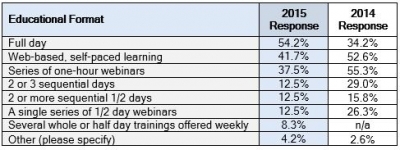 Whether you’ve considered this or not, effective listening is a skill, and an extremely important one at that.
Whether you’ve considered this or not, effective listening is a skill, and an extremely important one at that.Did you know that…
- Listening has been cited as a critical employment skill more frequently than any other skill?
- Co-workers and customers evaluate our communication abilities based, in part, on how well they think we listen?
- Listening skills are considered a good predictor of who receives promotions and other similar awards?
When it comes to managing projects, poor communications can result in increased project scope, the loss of multimillion dollar sales, and costly lawsuits. Since effective communication is grounded in the ability to listen effectively, perfecting this skill is well worth the effort.
When people interact in business and in their personal life, they interpret and infer meaning from a combination of verbal and non-verbal cues, as well as life experiences. Often the objective in communications is to enlarge the listener’s knowledge, perspective, and sensitivity that impact their beliefs. The listening skills of both parties are critical for this to be successful.
Academic research has identified two types of opposite styles of communications styles: Transmission-Centered Communications and Meaning-Centered Communications. Although people lean towards one style over the other, most people use both techniques depending upon the situation.
 Those who rely mostly on transmission-centered communications, send a message to receivers without assuring that the meaning is understood. Whereas those who are typically meaning-centered communicators spend the extra time and take the extra effort to determine the receiver’s level of understanding of the intended message.
Those who rely mostly on transmission-centered communications, send a message to receivers without assuring that the meaning is understood. Whereas those who are typically meaning-centered communicators spend the extra time and take the extra effort to determine the receiver’s level of understanding of the intended message. A meaning-centered view acknowledges that both parties during an interaction are simultaneously senders and receivers of the messages. They likely use multiple channels including nonverbal, paralinguistic (i.e., specific gestures, sounds, and intonations that occur alongside language), and contextual cues that contribute to the meaning associated with communication. Everything in a communication event is open to interpretation by those involved in the creation of meaning.
A meaning-centered view acknowledges that both parties during an interaction are simultaneously senders and receivers of the messages. They likely use multiple channels including nonverbal, paralinguistic (i.e., specific gestures, sounds, and intonations that occur alongside language), and contextual cues that contribute to the meaning associated with communication. Everything in a communication event is open to interpretation by those involved in the creation of meaning.
Transmission and meaning-centered communication are not opposing perspectives at the ends of a single continuum, but reflect different assumptions about the purpose and goals of communication. A transmission-orientation focuses on sending messages in order to influence a receiver; a meaning-centered orientation focuses on the shared meaning that paves the way for relationships.
A meaning-centered communication orientation describes an individual’s propensity to approach communication from the transactional, constructivist perspective — meaning is created during the exchange.
A transmission-centered communication orientation describes a person’s preference to approach communication from a more literal perspective focused on sending messages.
In particular, some people frequently communicate from a constructivist understanding, whereas other people more often communicate as if they can transmit knowledge to others. A meaning-centric communicator realizes that 100% understanding between people is improbable, and approaches each interaction accordingly. People engage in communication in a way that reflects their perspective on the communication process.
What is your communication orientation? To find out, take Merit Career Development's FREE Listening Skills Assessment. This assessment takes less than an hour. Upon completing, you will receive an explanatory report along with tips and techniques that you can use to become a more meaning-centered communicator. Greater success in the workplace awaits you.
PMPs: This assessment qualifies for one PDU and you will receive a certificate.
 Our project management courses have been updated to align with the 6th edition of the Project Management Body of Knowledge (PMBOK®) guide. Every course description in the catalog includes a listing of the number of credits by organization. See inset for example of accreditations per course.
Our project management courses have been updated to align with the 6th edition of the Project Management Body of Knowledge (PMBOK®) guide. Every course description in the catalog includes a listing of the number of credits by organization. See inset for example of accreditations per course. Previously, we wrote about how resolving conflict often has the side benefit of building a cooperative bond — even loyalty — between the factions. As each side gains a deeper understanding of the others’ viewpoints, respect builds and morale improves. Cooperative, low stress interactions, create a fertile environment for productive brainstorming, ultimately boosting the health of your organization.
Previously, we wrote about how resolving conflict often has the side benefit of building a cooperative bond — even loyalty — between the factions. As each side gains a deeper understanding of the others’ viewpoints, respect builds and morale improves. Cooperative, low stress interactions, create a fertile environment for productive brainstorming, ultimately boosting the health of your organization. In Part 3 of this series, we’ll examine the five conflict styles that help people understand their own responses as well as diffuse conflict with others. Specifically, we’ll look at the five conflict styles that Kenneth W. Thomas and Ralph H. Kilmann identified and can be assessed in the Thomas-Kilmann Conflict Mode Instrument (TKI), a globally accepted, widely used diagnostic assessment for resolving conflict.
In Part 3 of this series, we’ll examine the five conflict styles that help people understand their own responses as well as diffuse conflict with others. Specifically, we’ll look at the five conflict styles that Kenneth W. Thomas and Ralph H. Kilmann identified and can be assessed in the Thomas-Kilmann Conflict Mode Instrument (TKI), a globally accepted, widely used diagnostic assessment for resolving conflict. I aspired to broaden my career and went back to school for a Masters in Leadership Development about 12 years ago. Through a confluence of introductions, opportunities and also being an adjunct instructor at Drexel University, I joined one of my cohort’s businesses, Merit Career Development. Initially, I began helping them with a new branding initiative, but in an “Ah Ha” moment we realized that I’d likely be a strong trainer for Merit, too. We were right. I have been running corporate trainings for Merit now for five years and I love it! But here’s the surprise: one of my favorite courses to facilitate, is Conflict Management (followed closely by Critical Thinking & Decision-Making.)
I aspired to broaden my career and went back to school for a Masters in Leadership Development about 12 years ago. Through a confluence of introductions, opportunities and also being an adjunct instructor at Drexel University, I joined one of my cohort’s businesses, Merit Career Development. Initially, I began helping them with a new branding initiative, but in an “Ah Ha” moment we realized that I’d likely be a strong trainer for Merit, too. We were right. I have been running corporate trainings for Merit now for five years and I love it! But here’s the surprise: one of my favorite courses to facilitate, is Conflict Management (followed closely by Critical Thinking & Decision-Making.) Through a confluence of circumstances, that began with an invitation from the Keystone PMI Education Foundation Coordinator, Mr. Myles Miller, and the Keystone Chapter of the Project Management Institute, we supported a pilot with 6th graders at the Eyer Middle School in Pennsylvania’s North Penn School District. The parents and students were quite interested in learning the life skill of project management. While some of us were doubtful that our workplace-related program would resonate with these young students, we had enough people willing to give this a try that we scheduled the program. (
Through a confluence of circumstances, that began with an invitation from the Keystone PMI Education Foundation Coordinator, Mr. Myles Miller, and the Keystone Chapter of the Project Management Institute, we supported a pilot with 6th graders at the Eyer Middle School in Pennsylvania’s North Penn School District. The parents and students were quite interested in learning the life skill of project management. While some of us were doubtful that our workplace-related program would resonate with these young students, we had enough people willing to give this a try that we scheduled the program. ( The simulation project management competition also generated interest from many families whose children did not have the opportunity to participate the first time this was held, prompting a follow up event scheduled for Spring, 2017. Because the interest is so high, the school is planning to make SimulTrain a regular part of the Eyer Middle School curriculum. A number of universities are also interested in adding project management with simulation to their curriculum. The University of Scranton recently held a competition among their engineering students. There is a similar day scheduled at Lehigh University next month.
The simulation project management competition also generated interest from many families whose children did not have the opportunity to participate the first time this was held, prompting a follow up event scheduled for Spring, 2017. Because the interest is so high, the school is planning to make SimulTrain a regular part of the Eyer Middle School curriculum. A number of universities are also interested in adding project management with simulation to their curriculum. The University of Scranton recently held a competition among their engineering students. There is a similar day scheduled at Lehigh University next month.
 As the image to the left illustrates, participatory learning, especially using simulation for practice, provides the highest level of retention for training, second only to “teaching others.”
As the image to the left illustrates, participatory learning, especially using simulation for practice, provides the highest level of retention for training, second only to “teaching others.”
 Studies show that lack of EQ may limit a person’s ability to achieve results. Lower EQ scores correlate with lower merit pay increases, lower job satisfaction and more burnout. Managers’ and supervisors’ EQ scores correlate with their performance ratings.
Studies show that lack of EQ may limit a person’s ability to achieve results. Lower EQ scores correlate with lower merit pay increases, lower job satisfaction and more burnout. Managers’ and supervisors’ EQ scores correlate with their performance ratings. We all have specific words or phrases that are steeped in emotion. During the 1960s and 70s, the term “nuclear power” raised a great deal of emotion—both positive and negative. Similarly today we have emotionally charged words or phrases such as “gun control”, terrorism, and consumer privacy. It is important to recognize one’s own emotionally charged phrases and stop the emotional hijacking that is about to take place.
We all have specific words or phrases that are steeped in emotion. During the 1960s and 70s, the term “nuclear power” raised a great deal of emotion—both positive and negative. Similarly today we have emotionally charged words or phrases such as “gun control”, terrorism, and consumer privacy. It is important to recognize one’s own emotionally charged phrases and stop the emotional hijacking that is about to take place.

 The basis for choosing a course and provider were measured differently last year, but in both instances, the primary driver is the course topic and/or area that most needs development, followed by convenience of timing, and location. The program cost was lower in priority. See Q3 chart on the left for details.
The basis for choosing a course and provider were measured differently last year, but in both instances, the primary driver is the course topic and/or area that most needs development, followed by convenience of timing, and location. The program cost was lower in priority. See Q3 chart on the left for details.